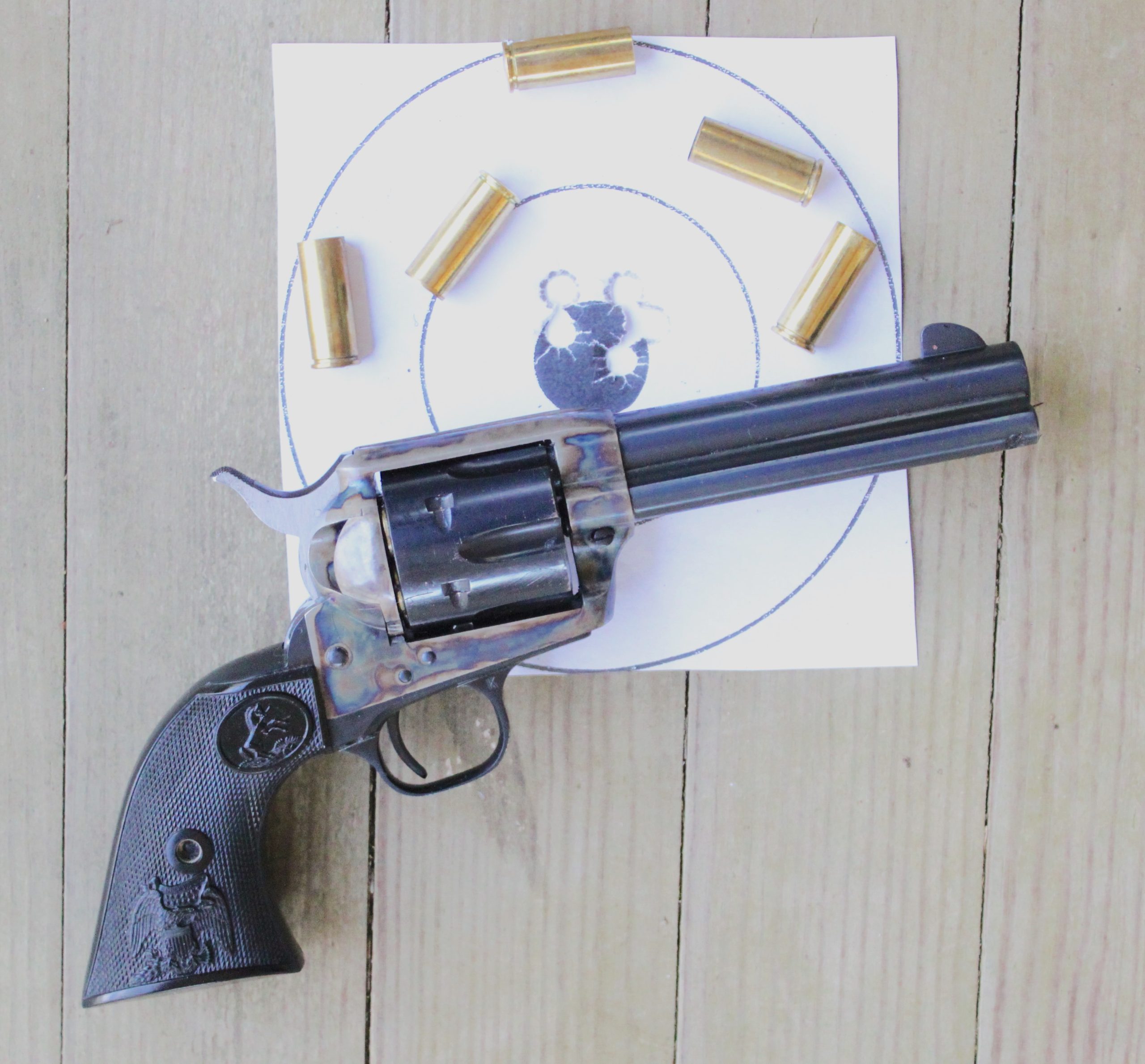
By Jim Dickson | Contributing Writer
Back in the early 1870’s the U.S. Army wanted to adopt a pistol firing the new self-contained cartridges to replace it’s cap and ball Model 1860 revolvers.
One of the requirements was for it to efficiently stop and kill a cavalry horse at 100 yards. They found out that .44 calibers were not doing a good job so they upped the caliber requirement to .45 at the last minute.
Colt had originally built their new cartridge single action around the traditional army caliber of .44 and they quickly rechambered it for the new .45 round that the Army wanted. The end result was the Model 1873 Colt Single Action Army revolver and the powerful new .45 Colt cartridge, a round with a 250 grain, .454 diameter lead bullet ahead of 40 grains of black powder. In the 7 ½-inch barrel revolvers that the Army ordered this loas had a muzzle velocity of 1,000 FPS. Since it had originally been built as a .44 caliber revolver the new single action was exceptionally svelte and this contributed to its fine handling qualities.
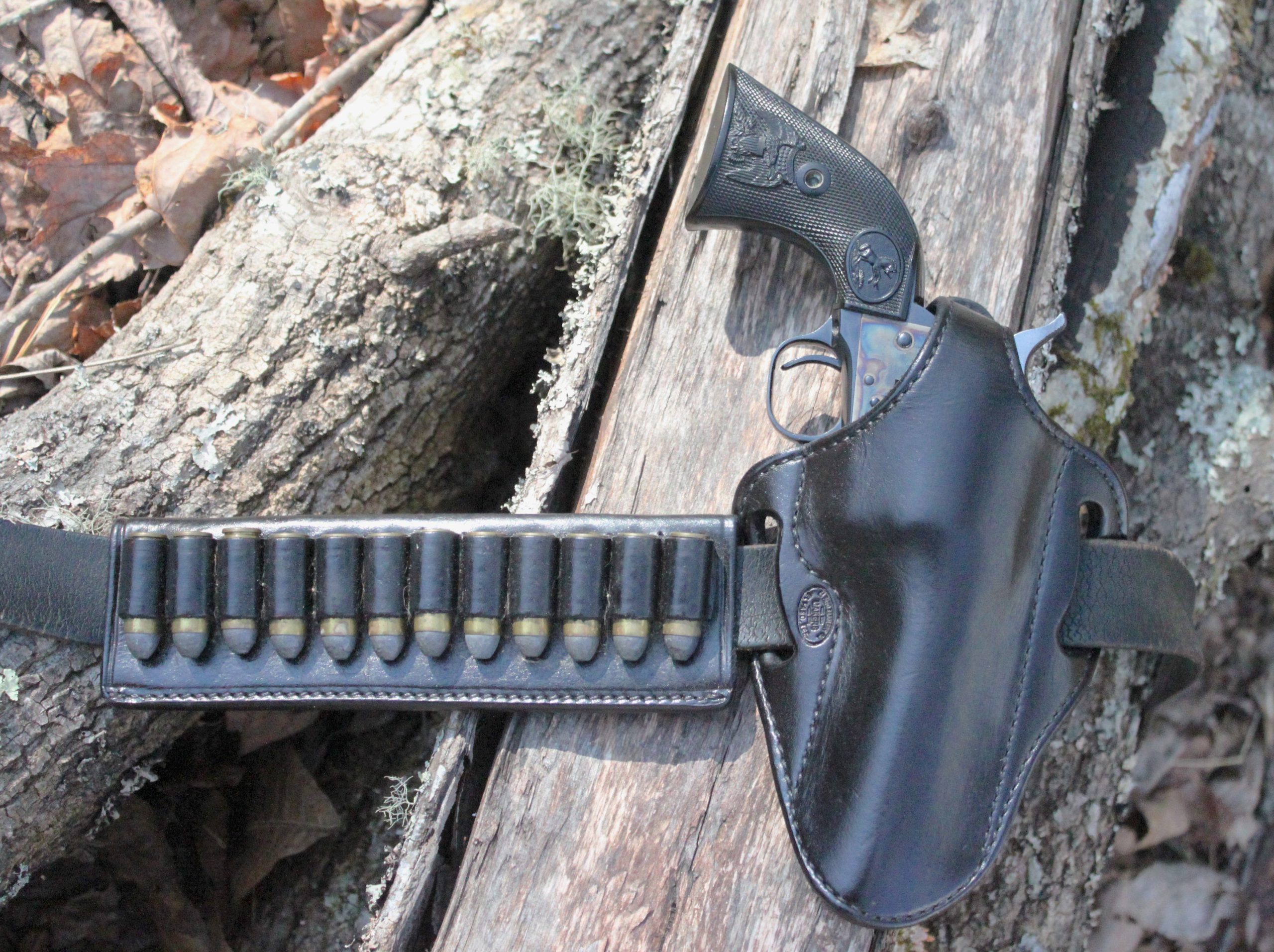
It should be noted that the old balloon head cases for the .45 Colt easily held 40 grains of black powder but the modern solid head cases lack that powder capacity as it made a stronger case and the modern smokeless powders did not need that much case capacity.
The new cartridge had the perfect balance of power. It was able to stop a man or a horse with one shot yet it did not have excessive recoil so it was capable of sustained rapid fire. Any more power and the second shot would sometimes be fatally slow when dealing with multiple opponents in combat. Any less power and you might need a second shot to stop the enemy which left you open to being killed by his compatriots.
You also had the problem of a faster cartridge going through the target without transmitting enough energy to bring your attacker to a sudden stop. If your bullet diameter was less than .45 you could not reliably stop an enemy soldier before he killed you.
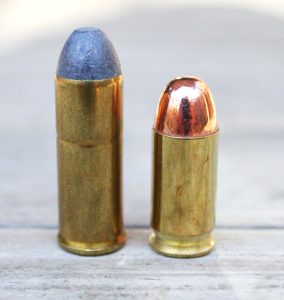
This was all borne out by the early 20th Century Thompson LaGuardia report on handgun stopping power for the U.S. Army. This was the most in depth and comprehensive study ever done on the subject before or since and it resulted in the subsequent adoption of the automatic pistol version of the .45 Colt, the .45ACP. They found that to reliably stop a man it took no less than a .45-caliber slug of 230 to 250 grains at 800 to 900 feet per second. Both the .45 Colt and its automatic pistol version, the .45 ACP, fit this perfectly.
As for effectiveness on game. the .45 Colt was equally perfect. At the time of its adoption the Army wanted the great plains herds of bison eradicated in order to starve Native Americans into submission. U.S. Cavalry troopers thought riding alongside the great shaggy beasts and killing them with their powerful new Colt revolvers was great sport. It worked just as good on grizzly bear and moose yet you could kill squirrels and rabbits without ruining a lot of meat which made it ideal for the pioneer subsistence hunter.
Unfortunately it was not originally a cartridge suitable for lever action rifles as it had been designed with only a rim diameter of .500 inches. This worked fine with the push rod ejector of the Colt Single Action Army revolver but simply wasn’t wide enough for the extractor of a lever action rifle to reliably engage.
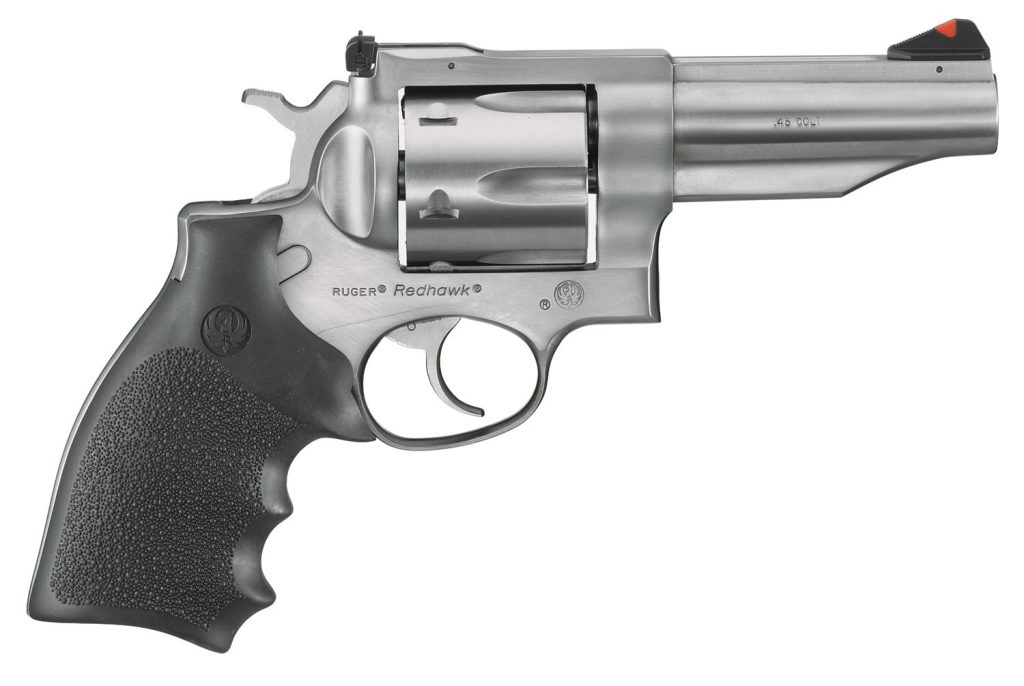
This also caused some problems with the early swing out cylinder revolvers and when the Army adopted the Colt New Service revolver Model 1909 as a stop gap until development work on the new automatic pistol was completed they increased the rim diameter to .530 inches. These cartridge rims were too wide for use in the old single actions and you could only load every other chamber with them as a result.
The ammunition companies took note and increased the standard rim size of the .45 Colt to .512 which was the largest size that would fit in the Colt Single Actions as they had originally been designed for a .44 caliber round. This solved all the problems but the lever action rifle companies did not take advantage of it until the late 20th Century when I believe Rossi of Brazil was the first to offer the .45 Colt in their exquisitely made copy of the Model 1892 Winchester. It was a big improvement in stopping power over the old .44-40 cartridge that had previously been the biggest bore round for the ‘92 Winchester.

Back in the Old West there was also the .45 Smith &Wesson Schofield which was a shorter and less powerful round. This led to the term .45 Long Colt to differentiate it from the shorter .45 Schofield cartridge.
Today there are quite a number of different factory loads for the .45 Colt. Here are 23 of them.
- Hornady 185 grain FTX @ 920 FPS
- Hornady 255 grain Cowboy Action @ 725 FPS
- Hornady 225 grain Leverevolution with a soft plastic ballistic tip giving better aerodynamic shape while still being safe in the tubular magazine of a lever action rifle. Muzzle velocity from a pistol is 950 FPS, at 50 yards 899 FPS, at 100 yards 855 FPS. When fired from a 20 inch barrel carbine the muzzle velocity is 1150 FPS.
- Barnes Vor-Tx 200 grain XPB HP @ 1025 FPS
- CorBon Hunter 300 grain +P JSP @ 1300 FPS (For use only in Ruger Redhawk and other guns that also chamber the.454 Casul)
- CorBon Hunter 335 grain HC @ 1050 FPS (For Ruger Redhawk and other guns that also chamber the .454 Casul) If you want maximum magnum power in a .45 Colt Ruger Redhawk this would be the one I would choose.
- CCI Big 4 Shotshell 140 grains # 4 shot. For those who want a shot load for snakes.
- Load-X 205 grain RNFP Cowboy Action @ 650 FPS
- Georgia Arms 200 grain Cowboy Action @ 750 FPS
- Georgia Arms 250 grain Cowboy Action @ 725 FPS
- Precision Cartridge 205 grain lead @ 950 FPS
- Precision Cartridge 250 grain FP Total Copper Jacket 725 FPS
- Precision Cartridge 250 grain JHP @ 750 FPS
- Precision Cartridge 250 grain TCJ @ 900 FPS
- Fiocchi 250 grain lead & 255 grain CMJ @ 750 FPS
- Black Hills 250 grain RNFP @ 725 FPS
- Sport Shooting 200 grain LRNFP @ 725 FPS
- Armscor 255 grain Lead Cowboy Action @ 847 FPS. Don’t let the Cowboy Action label fool you. This is one of the most powerful factory loads and it is suitable for use on both man and beast.
- Aguila 200 grain Cowboy Action @ 600 FPS
- Federal 225 grain SWHP @ 830 FPS
- Remington Performance Wheelgun 225 grain @ 830 FPS
- Remington 250 grain Muzzle velocity 750 FPS, at 25 yards 733 FPS, 50 yards 717 FPS
- Federal Hammer Down 250 grain 800 FPS in revolver 1400 FPS in carbine
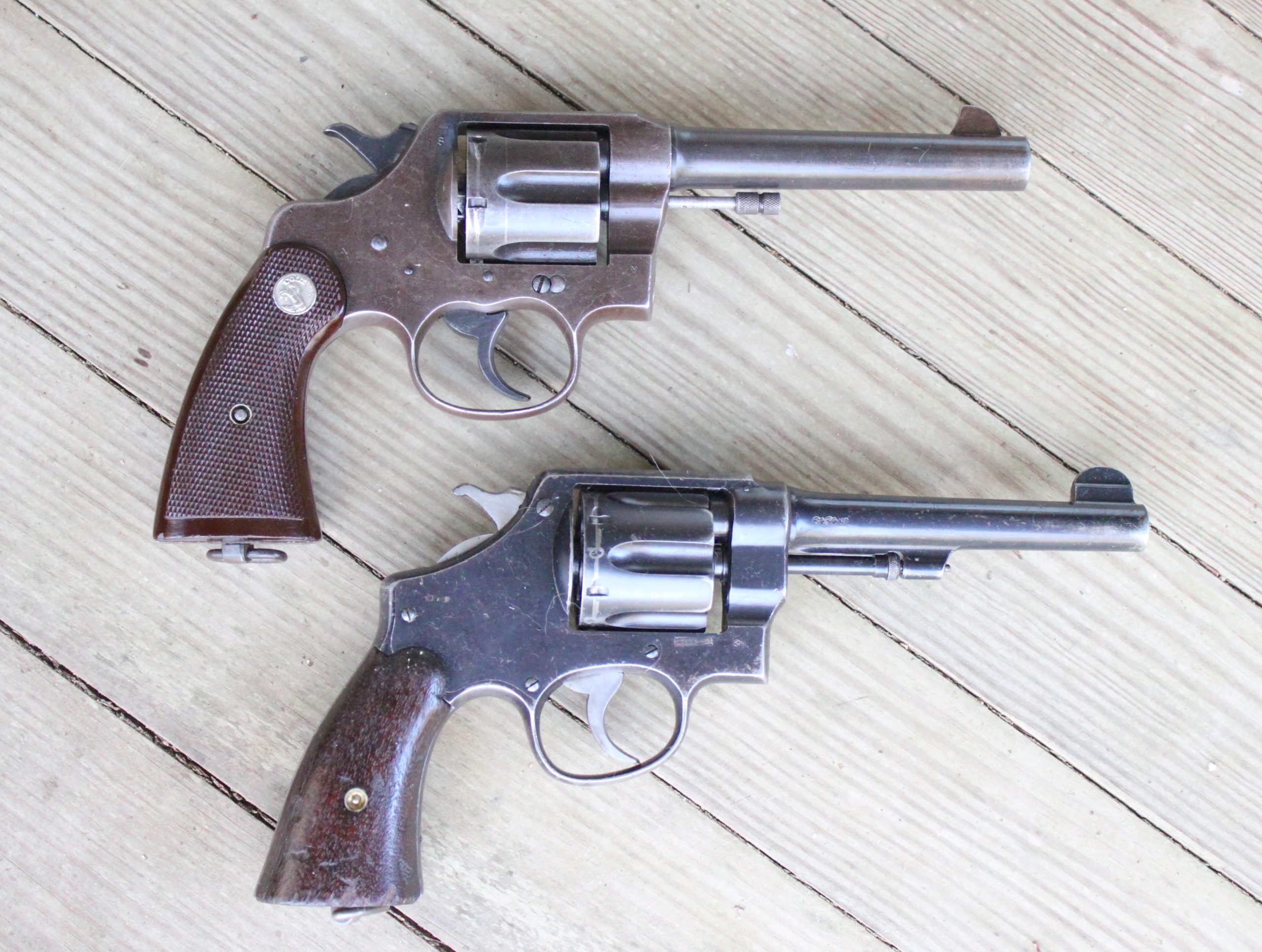
The .45 Colt and its automatic pistol sibling, the .45 ACP, remain the perfect handgun cartridges. Go smaller and you lose stopping power. Go with a high velocity magnum and you lose stopping power due to over penetration plus you have greatly increased decibel level of noise that can quickly do permanent hearing damage. Magnums also tend to recoil far too much for fast second shots and few people can shoot them as well as they can the .45’s. If you want more power get a rifle. If you want a pistol get a .45 Colt revolver or a .45 ACP automatic.



